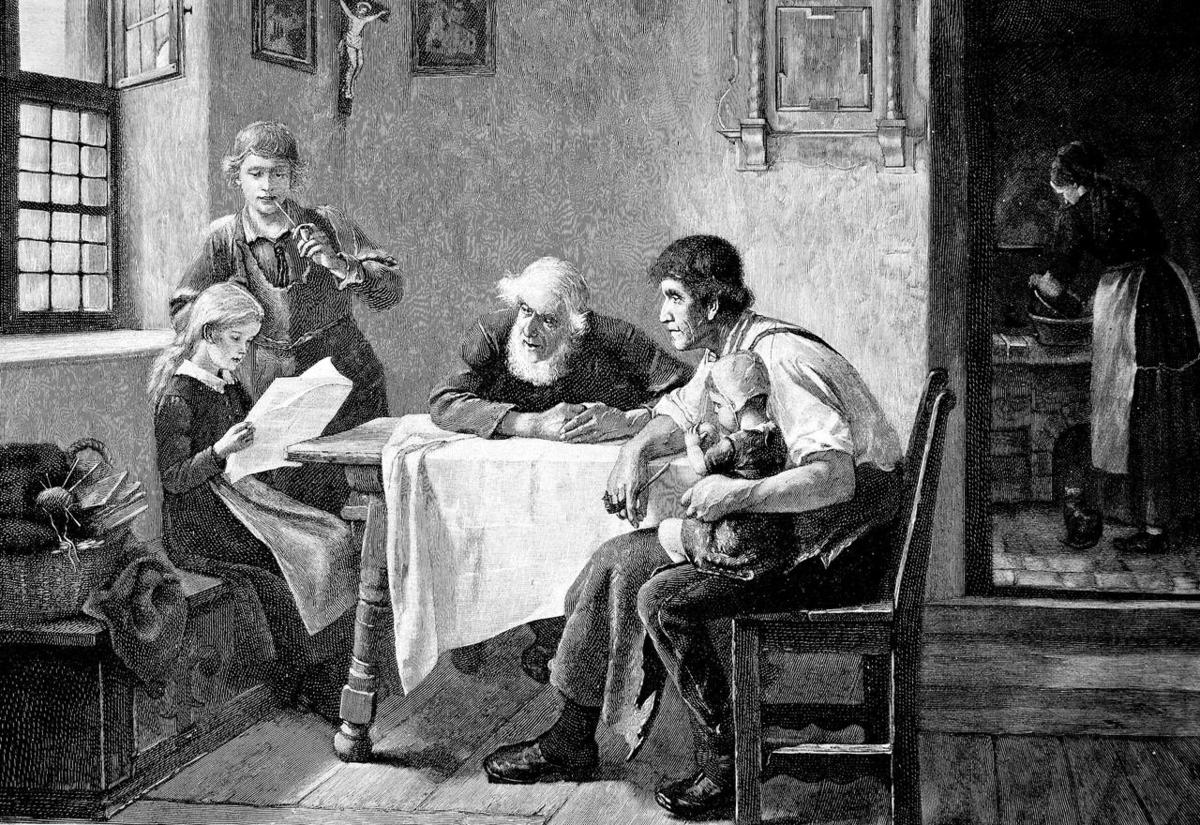Reading the Newspaper at Home (1880)
Abstract
In the nineteenth century, Germans of all social strata learned to read. An exploding print industry, a vast geographic network of libraries, reading rooms, and bookstores, the development of a national press, populations on the move, compulsory elementary schooling – all of these developments and more transformed the landscape of German learning. As a result, reading made inroads into areas of everyday life previously untouched by print. Domestic spaces, in general, became cherished zones of engagement with many different printed materials, including up-market encyclopedias for ostentatious consumption in family common rooms, romance novels and other escapist fiction read sedulously in the private retreats of bedrooms, and, of course, daily newspapers perused at kitchen tables. Here, we see a girl reading the news to members of her peasant or small-town family. The historic practice of Vorlesen (reading aloud to illiterate persons) persisted in some places even as late as 1880. But the youthfulness of the reader shown here suggests the direction in which reading/literacy in Germany was heading.
Source

Source: Source unknown, image purchased from a commercial database (Alamy). Please contact the Intersections editorial staff if you can identify the provenance of this image.